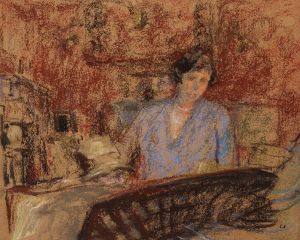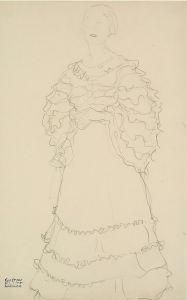
Reclining Woman
A hand-painted replica of Charles Demuth’s masterpiece Reclining Woman, meticulously crafted by professional artists to capture the true essence of the original. Each piece is created with museum-quality canvas and rare mineral pigments, carefully painted by experienced artists with delicate brushstrokes and rich, layered colors to perfectly recreate the texture of the original artwork. Unlike machine-printed reproductions, this hand-painted version brings the painting to life, infused with the artist’s emotions and skill in every stroke. Whether for personal collection or home decoration, it instantly elevates the artistic atmosphere of any space.
Charles Demuth was an American artist known for his contributions to the Precisionist movement, a style that emerged in the early 20th century characterized by its focus on clean lines, geometric forms, and a sense of order and clarity. While Demuth is perhaps best known for his architectural and industrial scenes, he also produced a number of works that explored other themes, including the human figure.
"Reclining Woman" is one of Demuth's lesser-known works, and there is limited information available about this specific painting. However, it is consistent with his broader body of work that often included watercolors and drawings of figures, particularly those that captured the intimate and personal aspects of his subjects. Demuth's figure studies often reflect his interest in modernism and his ability to convey emotion and character through minimalistic and precise lines.
Demuth was born in 1883 in Lancaster, Pennsylvania, and studied at the Pennsylvania Academy of the Fine Arts in Philadelphia. He later continued his studies in Paris, where he was influenced by the avant-garde movements of the time, including Cubism and Fauvism. These influences are evident in his approach to form and composition, even in his figure studies.
Throughout his career, Demuth maintained a close connection with other prominent artists and writers of his time, including Marsden Hartley, Georgia O'Keeffe, and Marcel Duchamp. His social circle and the cultural milieu of the early 20th century played a significant role in shaping his artistic vision.
In "Reclining Woman," Demuth likely employed his characteristic style of using watercolor to create soft yet defined forms. His technique often involved layering washes of color to build depth and dimension, while also maintaining a sense of lightness and transparency. This approach allowed him to capture the subtleties of the human form and the nuances of light and shadow.
Demuth's work often explored themes of identity and sexuality, and while "Reclining Woman" may not explicitly address these themes, it is part of a broader context in which the artist examined the complexities of human experience. His ability to convey emotion and narrative through his art is a testament to his skill and sensitivity as an artist.
Despite facing significant health challenges throughout his life, including complications from diabetes, Demuth remained a prolific artist until his death in 1935. His contributions to American modernism and his unique approach to both industrial and figurative subjects have left a lasting impact on the art world.
While "Reclining Woman" may not be as widely recognized as some of Demuth's other works, it is an example of his versatility and his ability to capture the essence of his subjects with precision and grace. As with many of his works, it reflects his commitment to exploring new artistic possibilities and his dedication to his craft.


















